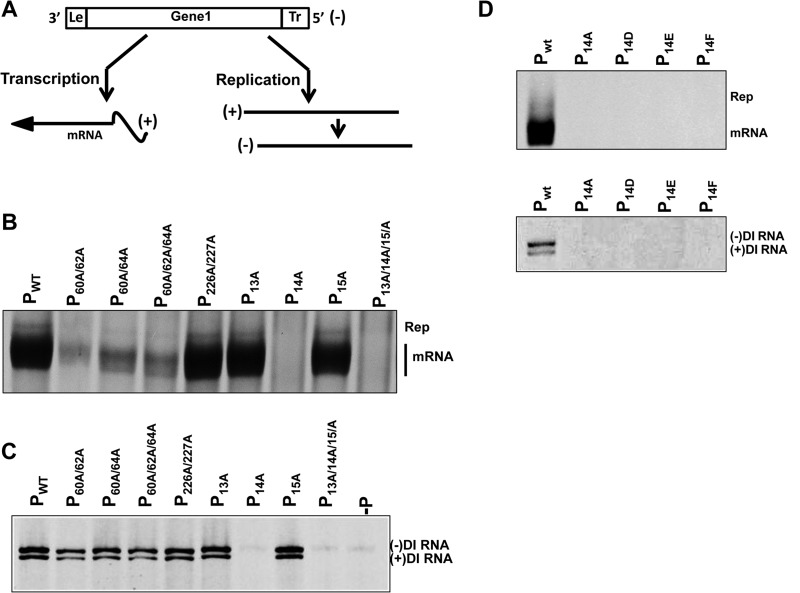FIG 6.
RNA transcription and replication supported by P proteins containing amino acid substitutions. (A) Schematic representation of subgenomic replicon ΔBgl22, used as a template for viral RNA synthesis. This replicon contains a single noncoding transcriptional unit flanked by the 3′ and 5′ signals required for transcription and replication. The replicon generates a negative-sense RNA [(−)] that serves as the template for the transcription of a single mRNA and for the replication of a full-length antigenomic RNA [(+)] that, in turn, serves as the template to generate more genomic RNA. (B) RNA synthesis was examined by transfecting the plasmids encoding the replicon ΔBgl22, the N, and L proteins, and the WT and substituted P proteins into BHK21 cells infected with vTF7-3. [3H]uridine-labeled RNA products were resolved on acid agarose-urea gels (pH 3.0) and detected by fluorography. The replication products and the mRNAs are indicated. (C) Ability of mutant P proteins to support the replication of DI RNA particles. BHK21 cells were coinfected with vTF7-3 and DI particles and then transfected with plasmids encoding the N, L, and WT or amino acid-substituted P proteins. Labeled RNA products were analyzed as described above. The negative- and positive-sense DI genomic RNAs were separated as indicated. (D) P proteins with residue Tyr14 replaced with alanine, glutamate, aspartate, or phenylalanine as indicated were examined for the ability either to support viral RNA synthesis in the subgenomic replicon system (top) or to support genomic RNA template replication (Rep) by authentic DI particles (bottom) as described above.

